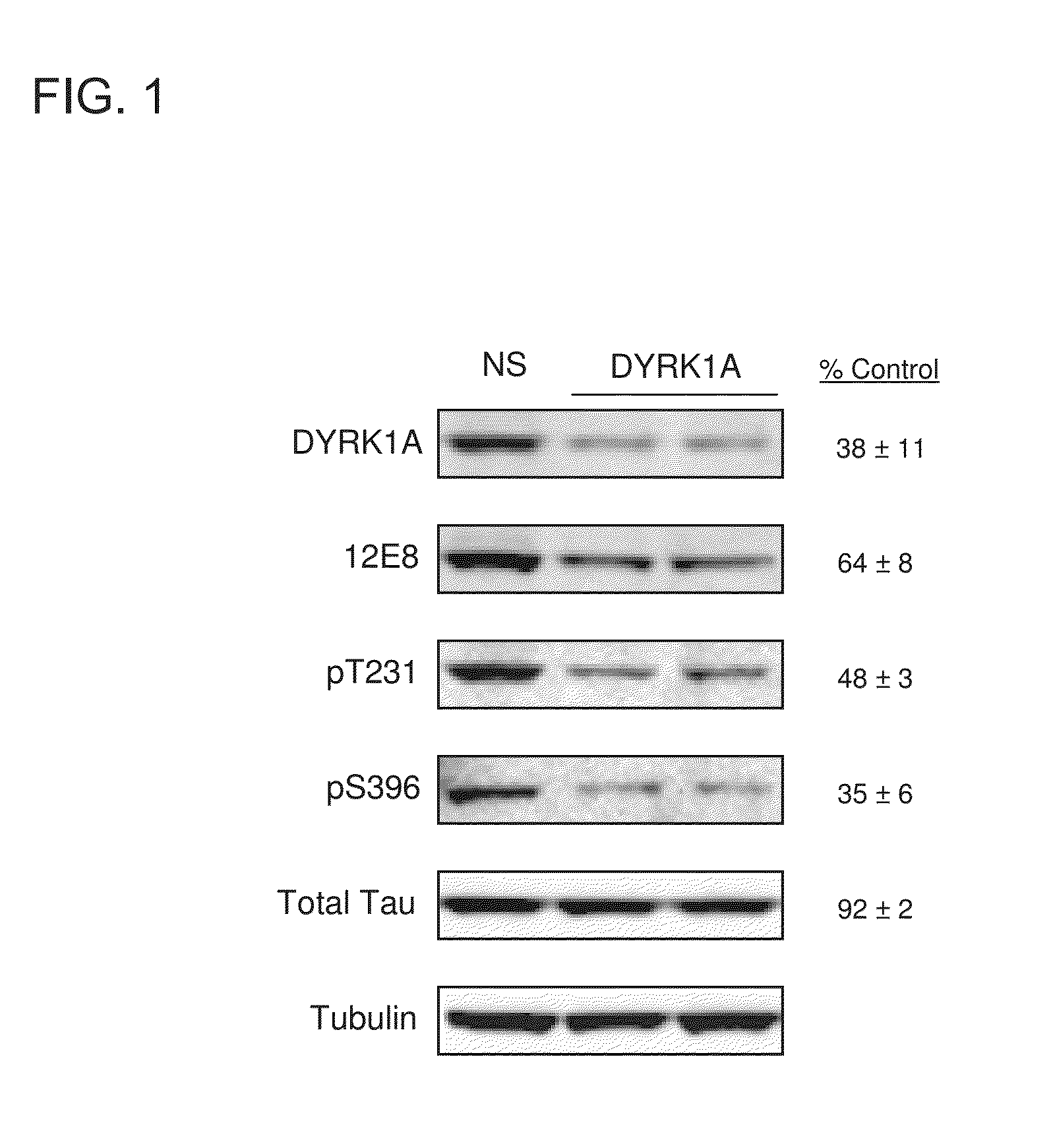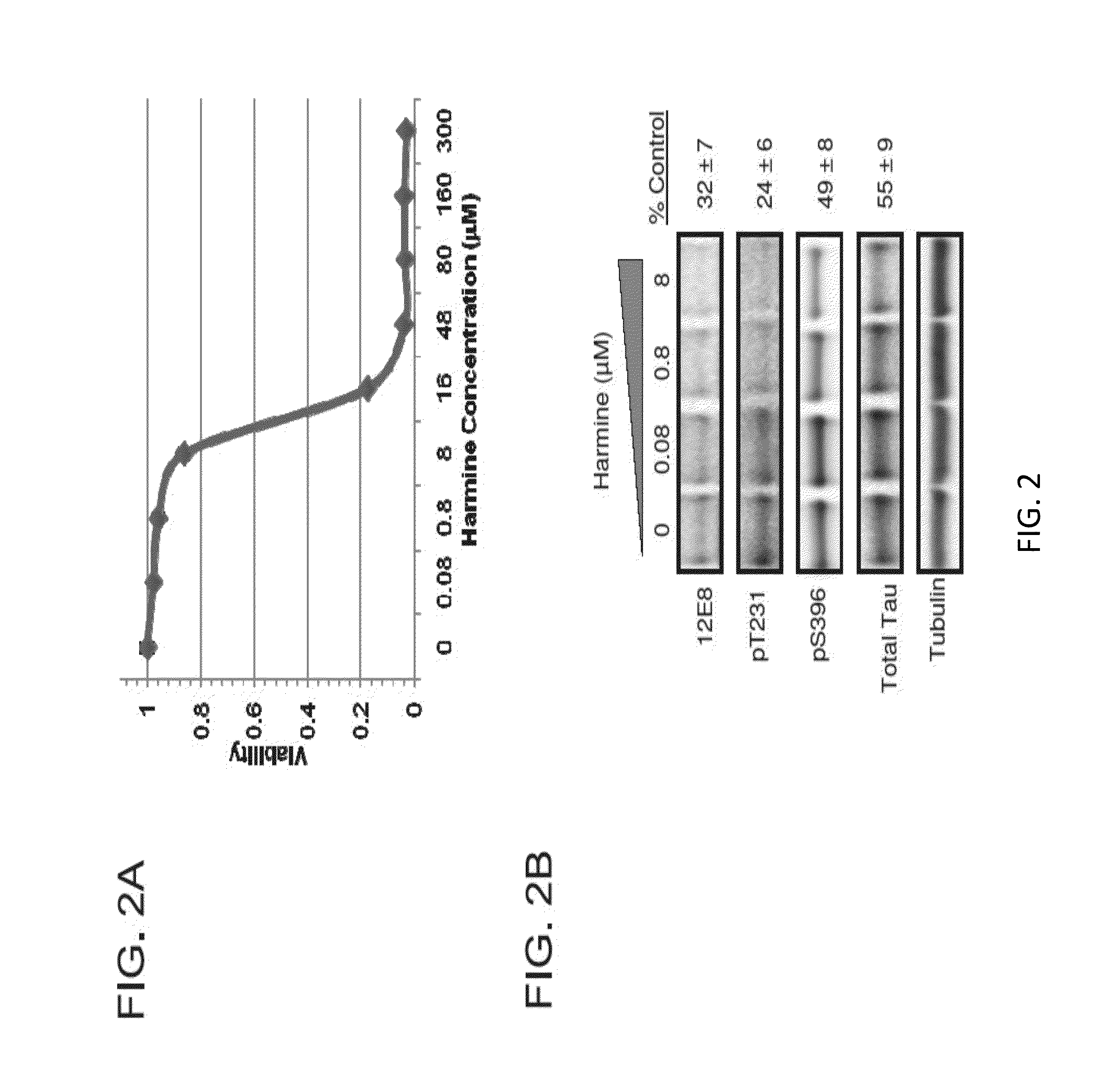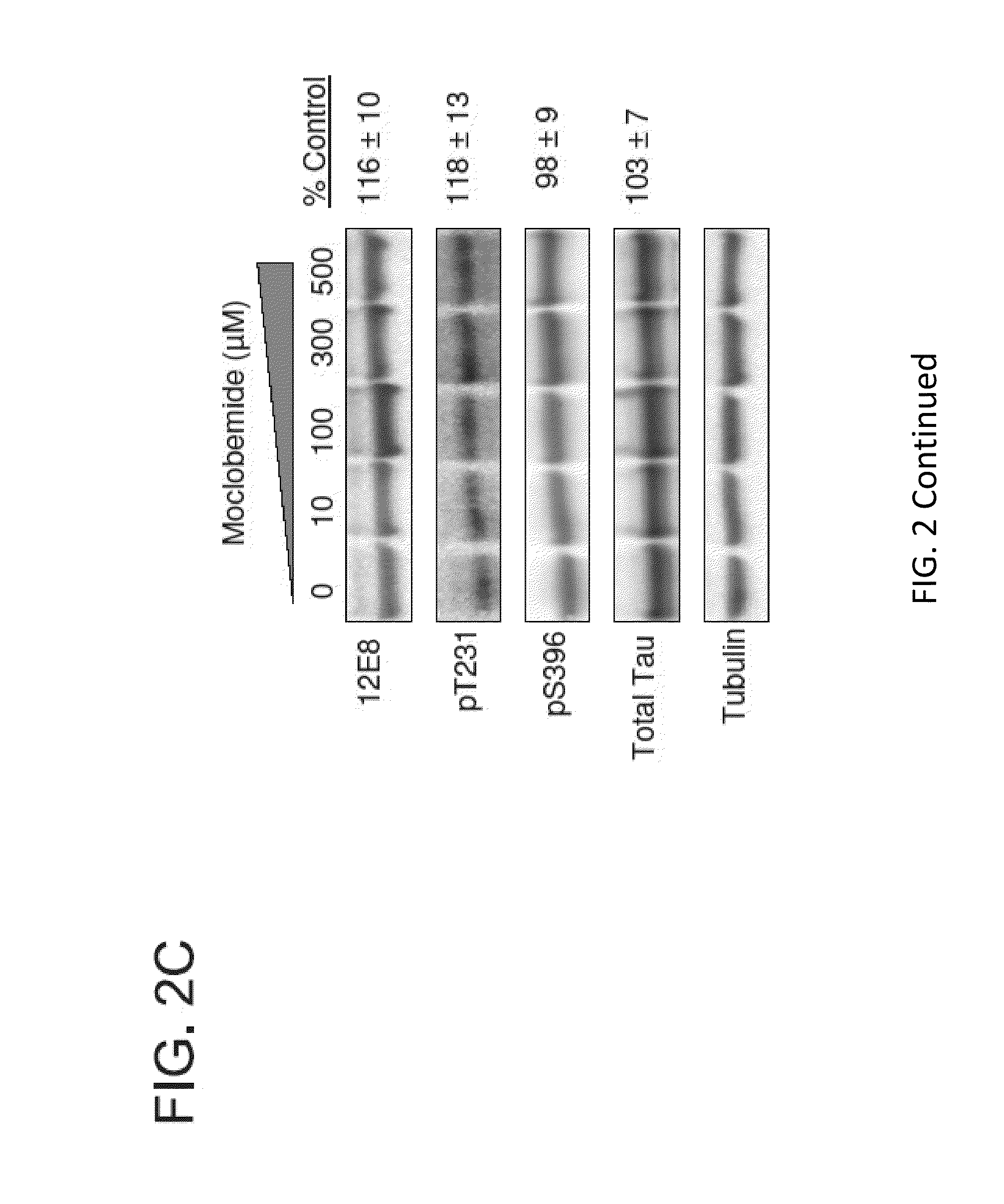Compounds that inhibit tau phosphorylation
a technology of phosphorylation and compound, applied in the field of compounds that inhibit tau phosphorylation, can solve the problems of affecting affecting the quality of life of a subject, and affecting the ability of patients to control bladder or bowel functions, etc., and achieve the effect of enhancing the working memory of a subj
- Summary
- Abstract
- Description
- Claims
- Application Information
AI Technical Summary
Benefits of technology
Problems solved by technology
Method used
Image
Examples
example 1
[0073]This Example demonstrates that Harmine and other β-carboline derivatives reduced tau phosphorylation.
[0074]Materials and Methods:
[0075]siRNA Transfection:
[0076]4R0N tau overexpressing H4 neuroglioma cells were maintained in Dulbecco's Modified Eagle Medium supplemented with 10% fetal bovine serum, 1% penicillin-streptomycin, geneticin (0.25 mg / ml), and 2 mM L-Glutamine. Cells were maintained by splitting 1:10 at 90% confluency. Prior to any experimentation, cells were 70-75% confluent to ensure cells were in their active growth phase. To test effects of DYRK1A knockdown on tau phosphorylation, cells were transfected with DYRK1A siRNA. Prior to treating cells with DYRK1A siRNA, siRNA was first complexed with siLentfect lipid transfection reagent (Bio-Rad, Hercules, Calif.) and reduced serum medium using a 6 well plate format. The final effective siRNA molarity used was 22.85 nM per well. Cells were grown for 96 hours at 37° C., 5% CO2. Cell lysates were prepared using the Compl...
example 2
[0097]This example demonstrates that Harmine significantly enhances hippocampal-dependent working memory.
[0098]Materials and Methods:
[0099]Subjects:
[0100]Twenty-six 17 month-old Fischer-344 male rats raised at the National Institute on Aging colony at Harlan Laboratories (Indianapolis, Ind.) were used in the study. After arrival, rats were pair-housed, had food and water ad-lib, and were maintained on a 12-h light / dark cycle. Procedures were approved by the Institutional Animal Care and Use Committee, and adhered to National Institutes of Health standards.
[0101]Experimental Design and Drug Treatments:
[0102]Rats were randomly divided into three treatment groups (n at start of study, m included in final behavioral analyses): vehicle (10, 10), low-Harmine 1 mg / kg (10, 10), or high-Harmine 5 mg / kg (10, 6). Nine days after arrival, animals started receiving daily subcutaneous injections at a volume of 1 ml / kg. Harmine (Acros Organics, Harmine hydrochloride hydrate 98%) was prepared daily...
PUM
| Property | Measurement | Unit |
|---|---|---|
| volume | aaaaa | aaaaa |
| diameter | aaaaa | aaaaa |
| diameter | aaaaa | aaaaa |
Abstract
Description
Claims
Application Information
 Login to View More
Login to View More - R&D
- Intellectual Property
- Life Sciences
- Materials
- Tech Scout
- Unparalleled Data Quality
- Higher Quality Content
- 60% Fewer Hallucinations
Browse by: Latest US Patents, China's latest patents, Technical Efficacy Thesaurus, Application Domain, Technology Topic, Popular Technical Reports.
© 2025 PatSnap. All rights reserved.Legal|Privacy policy|Modern Slavery Act Transparency Statement|Sitemap|About US| Contact US: help@patsnap.com



